- Zverev’s comeback ends Popyrin’s Toronto title defence ATP Tour
- Popyrin books Toronto quarter-final spot The Express Tribune
- Where to watch Alexander Zverev vs. Alexei Popyrin today: Canada Open quarterfinal free stream Syracuse.com
- ATP National Bank Open 2025 Quarterfinal Schedule – Who Faces Whom in the Last Eight? The Playoffs
- Tennis | Canada 2025 | Alexander Zverev faces defending champion Alexei Popyrin in semi-final bid Britwatch Sports
Blog
-
Zverev's comeback ends Popyrin's Toronto title defence – ATP Tour
-

Preterm birth shown to impact health decades later
The stress preterm infants experience at birth can carry on throughout a lifetime and cause negative health impacts later in life, necessitating the routine inclusion of birth history in medical records and the development of clinical guidelines for adults born preterm, the longest continuously running study of individuals born preterm in the United States has shown.
University of Rhode Island College of Nursing Professor Amy D’Agata is continuing the work that began in the 1980s with a group of babies born preterm at Women & Infants Hospital. Involving 215 people born 35 years ago-including a control group of full-term babies, and preterm babies born at 22 to 36 weeks-the study tracks the successes and difficulties preterm babies continue to face into adulthood, and compares them to the group of participants born full term. The project has so far garnered more than $10 million in research grant funding.
D’Agata, who took over as principal researcher after the retirement of Professor Emeritus Mary Sullivan, has published the most recent results in the Journal of the American Medical Association. The published paper focuses physiological and psychological health outcomes that D’Agata and her team of researchers have identified as the study participants approach 40 years old. Those born preterm have shown a higher risk of high blood pressure, high cholesterol, increased abdominal fat, and low bone density. Psychologically, the group tends to internalize problems, often resulting in increased levels of depression and anxiety.
“Preterm birth is not just a neonatal issue. It, in fact, is a lifelong condition,” D’Agata said the study shows. “For individuals who have medical complications early in life, we are now seeing an increased risk of different chronic health issues later in life. We are now realizing that there is a very strong link between what happens to you early in life and later health outcomes.”
The study offers important takeaways for health-care clinicians, who are not always aware a patient was born preterm because birth history is not commonly included in adult medical records. D’Agata’s study is showing the need to include the information, and to develop adult screening guidelines for individuals who have a history of preterm birth. The work is also helping people who have been impacted by preterm birth understand that their birth history should be included in their medical records and should be considered in the context of their overall health.
In this country, millions of people born preterm have grown into adulthood and are now seeing clinicians across primary care and various specialties, yet providers rarely ask about birth history. We are urging that birth history be included as a standard question on every adult intake form. Health cannot be fully optimized if we overlook such a critical assessment piece. Understanding an individual’s birth history, alongside growing research identifying increased health risks for those born preterm and the development of targeted clinical guidelines, will advance health equity for survivors of early birth. We believe a paradigm shift is needed in health care that recognizes preterm birth as a chronic condition requiring lifelong monitoring and support.”
Amy D’Agata, University of Rhode Island College of Nursing Professor
While the study’s most recent results were just published in JAMA Network Open in July, D’Agata is already looking toward the next set of findings. Continuing to work with fellow URI professor Justin Parent, D’Agata is examining epigenetic age acceleration among individuals born preterm. Understanding any differences in epigenetic aging that may exist between preterm and full-term born adults may be another approach to understanding long-term health.
Source:
University of Rhode Island
Journal reference:
D’Agata, A. L., et al. (2025). Psychological and Physical Health of a Preterm Birth Cohort at Age 35 Years. JAMA Network Open. doi.org/10.1001/jamanetworkopen.2025.22599.
Continue Reading
-
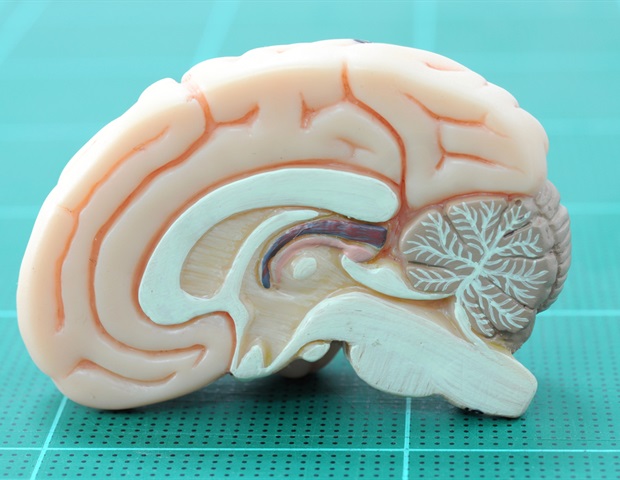
Sleep strengthens motor learning through targeted brain rhythms
When faced with difficult tasks, sometimes people hit a mental wall and make the decision to “sleep on it.” Returning to the task after sleeping, they often perform better. Why? Rhythmic brain activity during sleep transforms task-related information into stronger, longer-term memory. A new JNeurosci paper on research led by Dara Manoach, from Harvard Medical School, advances understanding of where in the brain this rhythmic activity appears to improve motor learning.
In the study, 25 participants learned a typing sequence while the researchers recorded their brain activity. After training, brain recordings continued as study participants napped. During sleep, cortical brain areas active during training had more rhythmic activity. Increased brain rhythms in these areas correlated with how much participants improved in the task after the nap. Notably, pre- and postnap task performance had different neural correlates; learning during training was associated with increased brain rhythms in movement execution areas during sleep, while postnap performance was linked to increased brain rhythms in movement planning areas during sleep. Says Manoach, “Brain rhythms occur everywhere in the brain during sleep. But the rhythms in these regions increase after learning, presumably to stabilize and enhance memory.”
The researchers theorize from their work that brain rhythms in motor execution areas may represent the memory of a task, while the rhythms in motor planning areas improve future performance.
Source:
Journal reference:
Sjøgård, M., Mylonas, D., Baxter, B., Shi, Z., Khan, S., Demanuele, C., Zhu, L., Tocci, C., Stickgold, R., Hämäläinen, M. S., & Manoach, D. S. (2025). Increased sleep spindles in regions engaged during motor learning predict memory consolidation. Journal of Neuroscience. https://doi.org/10.1523/JNEUROSCI.0381-25.2025
Continue Reading
-
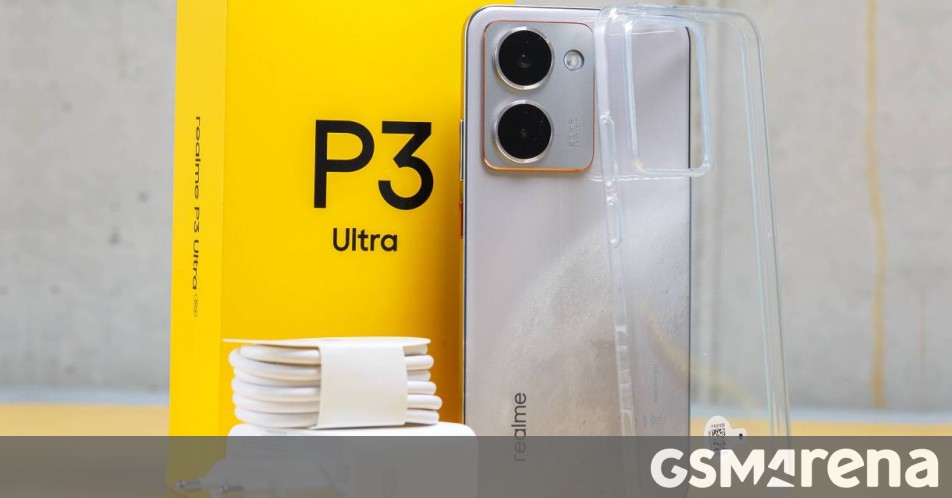
Realme P3 Ultra battery life and charging test results
The Realme P3 Ultra was originally announced in March, but started its global rollout fairly recently. We posted a hands-on with the phone back when it was first unveiled, but now we have a unit in for review. We can now share some of our findings and we’ll focus on the battery.
The Realme P3 Ultra boasts a Silicon-Carbon battery with 6,000mAh capacity. According to official numbers, the bundled 80W charger can get it from 1% to 100% in 47 minutes.
Starting with battery life, it scored an impressive Active use rating of 16:47h. This is thanks to a strong web browsing and good call time results. Here’s how it compares against similar phones.
The Realme 14 Pro+ also has a 6,000mAh Si/C battery and the same 6.83” 1272p+ OLED display. However, the Realme only comes out ahead in the browsing test, in all other tests it ran out of juice faster.
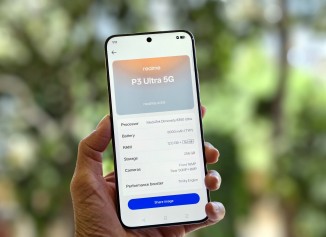
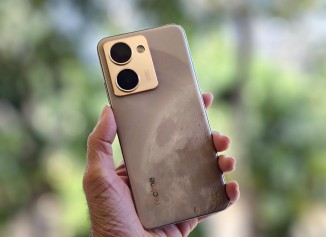
Realme P3 UltraThe Oppo Reno13 Pro is a bit older, but uses the same chipset (Dimensity 8350) as the P3 Ultra, the same 6.83” OLED display, but has a slightly smaller 5,800mAh battery. That holds it back a bit, but the Reno posted great results nevertheless.
The Motorola Edge 60 Pro also uses the Dimensity 8350 and powers it off a 6,000mAh Si/C battery. Its display is a bit smaller at 6.7”, but it’s close enough. The Moto also turned in good results, though not quite good enough to match the P3 Ultra.
Moving on to charging, the Realme P3 Ultra is off to a bit of a slow start – 90W systems get more done in 15 minutes, but even the same 80W SuperVOOC in the older Realme inches ahead.
By the 30 minute mark, the lead opens up – the Poco is almost done, despite having 500mAh further to go, while the 6,000mAh battery in the Realme 14 Pro+ is 7% ahead and the 200mAh smaller Reno13 Pro battery is 12% ahead.
The full charge – which is advertised to take 47 minutes – takes a bit longer than that and finishes in 51 minutes. That puts it ahead of the Realme 14 Pro+, which slowed down at the final stretch, but is 7 minutes slower than what the 90W Motorola TurboCharge needs for the same battery capacity.
The Realme P3 Ultra offers impressive battery life without being excessively thick or heavy – in fact, it’s quite slender at 7.4mm and 183g or 186g. The exact weight depends on which color you go for – our review unit is the Glowing Lunar option with a glow-in-the-dark back. Do you need that? No. But do you want it? The kid in us whispers “Yes”.
Anyway, the 80W charging system doesn’t get to brag about any victories, but in practice it is fast enough – even a dead battery will be ready for a full day in half an hour. Stay tuned for a detailed review.
Realme P3 Ultra
Continue Reading
-
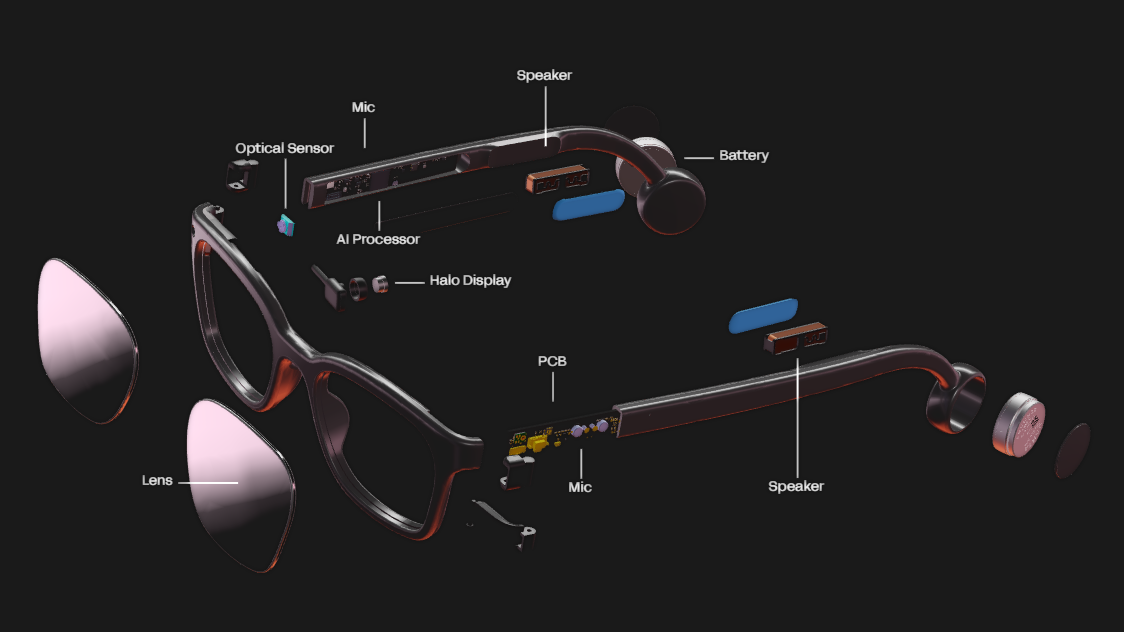
Brilliant Labs Has New Smart Glasses, With A New Display
Brilliant Labs have been making near-eye display platforms for some time now, and they are one of the few manufacturers making a point of focusing on an open and hacker-friendly approach to their devices. Halo is their newest smart glasses platform, currently in pre-order (299 USD) and boasting some nifty features, including a completely new approach to the display.
Development hardware for the Halo display. The actual production display is color, and integrated into the eyeglasses frame. Halo is an evolution of the concept of a developer-friendly smart glasses platform intended to make experimentation (or modification) as accessible as possible. Compared to previous hardware, it has some additional sensors and an entirely new approach to the display element.
Whereas previous devices used a microdisplay and beam splitter embedded into a thick lens, Halo has a tiny display module that one looks up and into in the eyeglasses frame. The idea appears to be to provide the user with audio (bone-conduction speakers in the arms of the glasses) as well as a color “glanceable” display for visual data.
Some of you may remember Brilliant Labs’ Monocle, a transparent, self-contained, and wireless clip-on display designed with experimentation in mind. The next device was Frame, which put things into a “smart glasses” form factor, with added features and abilities.
Halo, being in pre-release, doesn’t have full SDK or hardware details shared yet. But given Brilliant Labs’ history of fantastic documentation for their hardware and software, we’re pretty confident Halo will get the same treatment. Want to know more but don’t wish to wait? Checking out the tutorials and documentation for the earlier devices should give you a pretty good idea of what to expect.
Continue Reading
-
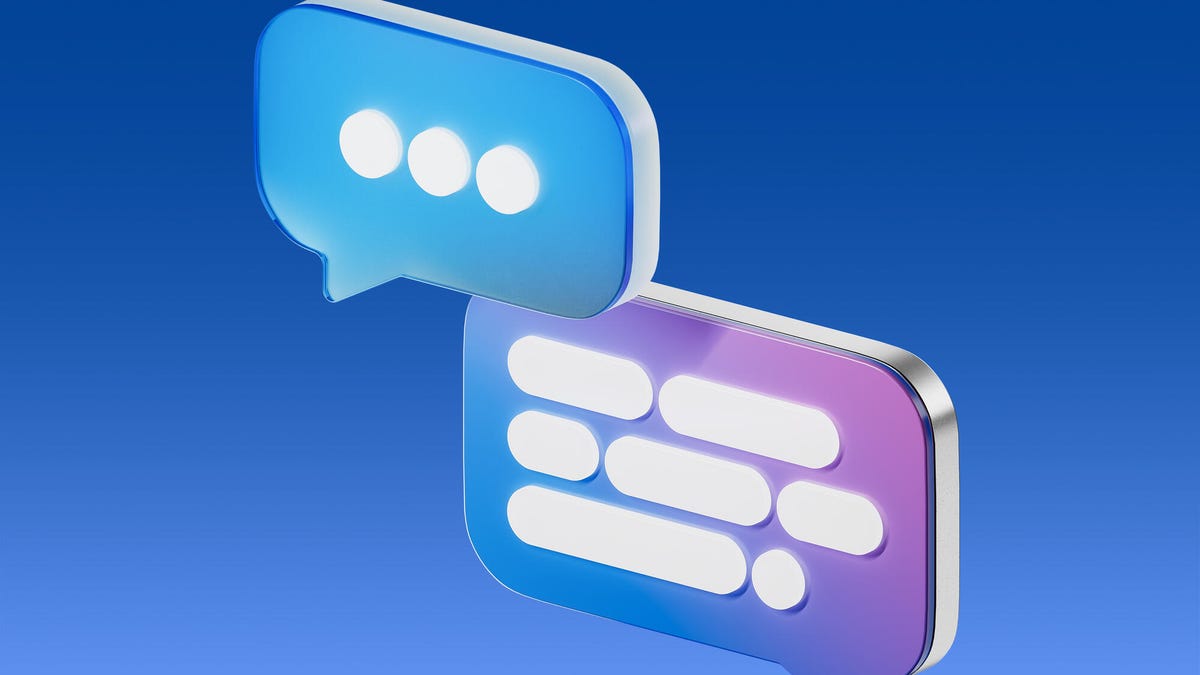
People are using ChatGPT to write their text messages – here’s how you can tell
Kirill Stytsenko/Getty Images ZDNET’s key takeaways
- People are using AI to write sensitive messages to loved ones.
- Detecting AI-generated text is becoming more difficult as chatbots evolve.
- Some tech leaders have promoted this use of AI in their marketing strategies.
Everyone loves receiving a handwritten letter, but those take time, patience, effort, and sometimes multiple drafts to compose. Most of us at one time or another have given a Hallmark card to a loved one or friend. Not because we don’t care; more often than not, because it’s convenient — or maybe we just don’t know what to say.
These days, some people are turning to AI chatbots like ChatGPT to express their congratulations, condolences, and other sentiments, or just to make idle chitchat.
AI-generated messages
One Reddit user in the r/ChatGPT subreddit this past weekend, for example, posted a screenshot of a text he’d received from her mom during her divorce, which he suspected may have been written by the chatbot.
The message read: “I’m thinking of you today, and I want you to know how proud I am of your strength and courage,” the message read. “It takes a brave person to choose what’s best for your future, even when it’s hard. Today is a turning point — one that leads you toward more peace, healing, and happiness. I love you so much, and I’m walking beside you — always ❤️😘”
Also: Anthropic wants to stop AI models from turning evil – here’s how
The redditor wrote that the message raised some “red flags” since it was “SO different” from the language their mom usually used in texts.
In the comments, many other users defended the mother’s suspected use of AI — arguing, basically, that it’s the thought that counts. “People tend to use ChatGPT when they aren’t sure what to say or how to say it, and most important stuff fits into that category,” one person wrote. “I’m sure it’s very off-putting, but I think the intentions in this case were really good.”
As public use of generative AI has grown in recent years, so too has the number of online detection tools designed to distinguish AI- and human-generated text. One of those, a site called GPTZero, reported a 97% probability that the text from the redditor’s mom had been written by AI. Detecting AI-generated text is becoming more difficult, however, as chatbots become more advanced.
Also: How to prove your writing isn’t AI-generated with Grammarly’s free new tool
On Friday, another user posted in the same subreddit a screenshot of a text they suspected had also been generated by ChatGPT. This one was more casual — the sender was discussing their life after college — but as was the case with the recent divorcée, there was clearly something about the tone and language of the text that set off some kind of instinctive alarm in the mind of the recipient. (The redditor behind that post commented that they replied to the text using ChatGPT, providing a glimpse of a strange and perhaps not so distant future in which a growing number of text conversations are handled entirely by AI.)
AI-induced guilt
Others are wrestling with feelings of guilt after using AI to communicate with loved ones. In June, a redditor wrote that they felt “so bad” after they used ChatGPT to respond to their aunt: “it gave me a terrific reply that answered all her questions in a very thoughtful way and addressed every point,” the redditor wrote. “She then responded and said that it was the nicest text anyone has ever sent to her and it brought tears to her eyes. I feel guilty about this!”
AI-generated sentimentality has been actively encouraged by some within the AI industry. During the summer Olympics last year, for example, Google aired an ad depicting a mom using Gemini, the company’s proprietary AI chatbot, to compose a fan letter on behalf of her daughter to US Olympic runner Sydney McLaughlin-Levrone.
Google removed the ad after receiving significant backlash from critics who pointed out that using a computer to speak on behalf of a child was perhaps not the most dignified or desirable technological future we should be aspiring to.
How can you tell?
Just as image-generating AI tools tend to garble words, add the occasional extra finger, and fail in other predictable ways, there are a few telltale signs of AI-generated text.
Also: I found 5 AI content detectors that can correctly identify AI text 100% of the time
The first and most obvious is that if it’s supposedly coming from a loved one, it will be devoid of the usual tone and style that person exhibits in their written communication. Similarly, AI chatbots generally won’t include references to specific, real-life memories or people (unless they’ve been specifically prompted to do so), as humans so often do when writing to one another. Also, if the text reads as being a little too polished, that could be another indicator that it’s been generated by AI. And, of course, always look out for ChatGPT’s favorite punctuation — the em dash.
You can also check for AI-generated text using GPTZero or another online AI text detection tool.
Get the morning’s top stories in your inbox each day with our Tech Today newsletter.
Continue Reading
-
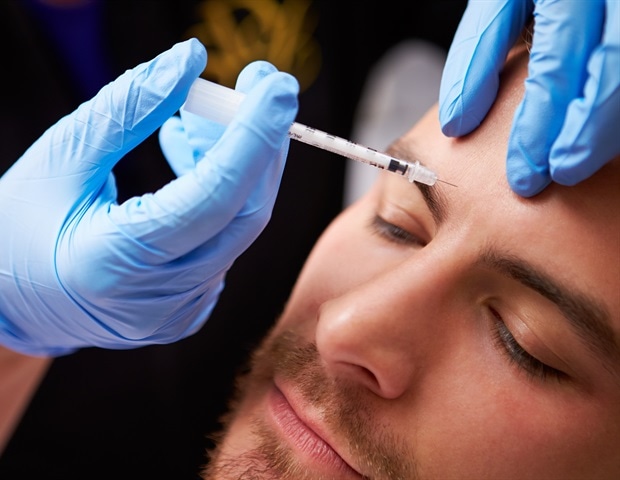
Targeted botox delivery shows promise for treating jaw disorder
Temporomandibular disorder (TMD) limits jaw function and is so painful that it lessens the quality of life. Botulinum toxin-also known as botox-is emerging as an effective treatment option, but there are concerns about side effects, like muscle dysfunction. Eungyung Kim and Yu Shin Kim, from the University of Texas Health Science Center at San Antonio, led a study using a mouse model of TMD to explore the possibility of using botox as a treatment.
In their JNeurosci paper, the researchers discovered that injecting botox directly into the male mouse temporomandibular joint (TMJ) instead of surrounding muscle tissue reduced TMD-related pain without causing side effects. More specifically, hypersensitivity and pain from TMD were mitigated without impairing general movement abilities and feeding behavior. The researchers also found that the botox injections they delivered reduced TMD-related neural activity. On a molecular level, mice that received botox injections into the TMJ had less expression of proteins that promote pain.
While sex differences remain unexplored, according to the authors, this work suggests it may be possible to overcome botox side effects by avoiding muscle tissue and injecting the toxin directly into the TMJ.
Source:
Journal reference:
Kim, E., Son, H., Zhang, Y., Shannonhouse, J., Gomez, R., Han, D., Park, J. T., Kim, S. T., Amarista, F., Perez, D., Ellis, E., & Kim, Y. S. (2025). BoNT injection into temporomandibular joint alleviates TMJ pain in forced mouth opening mouse model. The Journal of Neuroscience, e2035242025. https://doi.org/10.1523/jneurosci.2035-24.2025
Continue Reading
-

Asian Stocks Rise on Fed Rate Cut Bets, Dip Buying: Markets Wrap
(Bloomberg) — Asian stocks advanced on renewed risk appetite, as a wave of dip buying combined with growing bets on potential interest-rate cuts lifted investor sentiment.
The MSCI Asia Pacific Index rose 0.7%, as South Korean shares jumped 1.4%. Oil steadied after a three-day drop as investors weighed risks to Russian supplies, with US President Donald Trump stepping up his threat to penalize India for buying Moscow’s crude. Treasuries and a gauge of the dollar were little changed while gold advanced 0.2%.
On Monday, the S&P 500 posted its biggest rally since May as traders started to price in rate cuts by the Federal Reserve, following the weaker-than-expected jobs data. Equities have rebounded sharply from their April lows, driven by growing investor optimism that corporate America can absorb the impact of the recent wave of tariffs and the US economy will be able to avoid a recession.
“It looks like today everyone is following the upward trend in US stocks,” said Hiroshi Namioka, chief strategist at T&D Asset Management. “It’s a bumpy road, and investors are still mindful of the possibility of a recession. But signs of growth, particularly in US tech stocks, are helping sentiment.”
After the jobs data on Friday, the markets were implying a roughly 80% chance of a rate cut at the next Fed meeting. Following last night’s trade, those odds have increased to nearly 95%, wrote Kyle Rodda, a senior market analyst at Capital.com in Melbourne.
Tech megacaps led gains Monday, rebounding from recent selling pressure, with Nvidia Corp. and Meta Platforms Inc. each surging at least 3.5%.
S&P 500 earnings are crushing second-quarter expectations — up 9.1%, triple the pre-season forecast and the strongest beat rate since 2021, according to data compiled by Bloomberg Intelligence.
Monday’s jump in stocks prompted a comment from Trump, who said it was a “Good day in the Stock Market” and there will be many more days like this.
“America is very rich again, and stronger than ever before,” Trump wrote on his Truth Social platform Monday.
Still, a chorus of stock market prognosticators at some of Wall Street’s biggest firms are warning clients to prepare for a pullback as sky-high equity valuations slam into souring economic data.
On Monday, Morgan Stanley, Deutsche Bank AG and Evercore ISI all cautioned that the S&P 500 Index is due for a near-term drop in the weeks and months ahead. The predictions come after a furious rally from April’s lows that propelled the gauge to levels it has never seen before.
Separately, Fed San Francisco President Mary Daly said the time is nearing for rate cuts given mounting evidence that the job market is softening and there are no signs of persistent tariff-driven inflation, Reuters reported.
“I was willing to wait another cycle, but I can’t wait forever,” Daly said of the Fed’s decision last week.
In Asia, investors will also be focused on an auction of 10-year Japanese government bonds later Tuesday. Some market participants expect the sale to be weak following the recent decline in yields.
On the tariff front, the European Union is expecting Trump to announce executive actions this week to formalize the bloc’s lower levies for cars and grant exemptions from levies for some industrial goods such as aviation parts, according to people familiar with the matter. Meanwhile, the Swiss government said it is determined to win over Washington after last week’s shock announcement of 39% levies on exports to America.
“Our base case remains that US tariffs will eventually settle around 15%. While this would be the highest since the 1930s, and six times higher than when Trump returned to office, we do not expect it to cause a recession or end the equity bull market,” said Ulrike Hoffmann-Burchardi at UBS Global Wealth Management.
Corporate News:
Palantir Technologies Inc. reported a 48% increase in revenue for the second quarter to more than $1 billion, citing the “astonishing impact” of artificial intelligence technology on its business. Tesla Inc. approved an interim stock award worth about $30 billion for Chief Executive Officer Elon Musk, a massive payout meant to keep the billionaire’s attention on the automaker as a legal fight over a 2018 pay package drags on. Meanwhile, shipments from Tesla Inc.’s Shanghai factory slipped back into decline on intense competition in China and global trade uncertainties. Some of the main moves in markets:
Stocks
S&P 500 futures rose 0.2% as of 10:47 a.m. Tokyo time Japan’s Topix rose 0.6% Australia’s S&P/ASX 200 rose 1.1% Hong Kong’s Hang Seng rose 0.1% The Shanghai Composite rose 0.4% Euro Stoxx 50 futures rose 0.1% Currencies
The Bloomberg Dollar Spot Index was little changed The euro was little changed at $1.1572 The Japanese yen was little changed at 146.96 per dollar The offshore yuan was little changed at 7.1778 per dollar Cryptocurrencies
Bitcoin was little changed at $114,849.2 Ether fell 0.3% to $3,691.1 Bonds
The yield on 10-year Treasuries was unchanged at 4.19% Japan’s 10-year yield declined 2.5 basis points to 1.475% Australia’s 10-year yield declined 11 basis points to 4.21% Commodities
West Texas Intermediate crude was little changed Spot gold rose 0.2% to $3,380.71 an ounce This story was produced with the assistance of Bloomberg Automation.
–With assistance from Alice French and Jason Scott.
©2025 Bloomberg L.P.
Continue Reading
-

Kyoto University team develops pain reliever comparable to morphine
A Kyoto University research team has developed a pain-reliever that is comparable to morphine but does not have serious side effects.
Morphine, often administered to cancer patients, has serious adverse effects such as breathing issues and addiction.
According to the team, the newly developed drug, Adriana, is a groundbreaking painkiller, which works on a completely different mechanism to morphine and other existing synthetic opioids. The drug has the potential to revolutionize pain control in the medical field, the team said.
The team also expects that the drug will help resolve the so-called opioid epidemic, in which a large number of deaths occur mainly due to overdoses of opioids.
Its findings were published in the online edition of the U.S. journal Proceedings of the National Academy of Sciences.
When a person encounters a life-threatening situation, norepinephrine, an organic chemical secreted from the brain, suppresses pain.
For its study, the team focused on the human body regulating oversecretion of norepinephrine. By introducing a new research technology, the team succeeded in developing a drug blocking such a control function for the first time in the world.
In a clinical trial conducted at the Kyoto University Hospital between January 2023 and December 2024, the team confirmed the new drug’s efficiency to a certain extent for patients including 20 who underwent lung cancer surgery.
The team plans to conduct a clinical trial in the United States for 400 postsurgery patients in 2026, aiming to put Adriana into practical use in 2028.
“We hope that the new drug will help cancer patients who previously had no choice but to use opioids live their lives without pain as well as a need to worry about addiction or serious side effects,” Masatoshi Hagiwara, a professor at the university, said.
Continue Reading
-
Chinese shares open higher Tuesday – Xinhua
- Chinese shares open higher Tuesday Xinhua
- China, HK stocks rebound after steep weekly loss Business Recorder
- Goldman Sachs: Raising the Target Price for the MSCI Asia Pacific Index, Maintaining an ‘Overweight’ Rating on Chinese Equities 富途牛牛
- Chinese shares close higher Monday bastillepost.com
- China’s Markets See A Lift As Trade Talks Unfold Finimize
Continue Reading